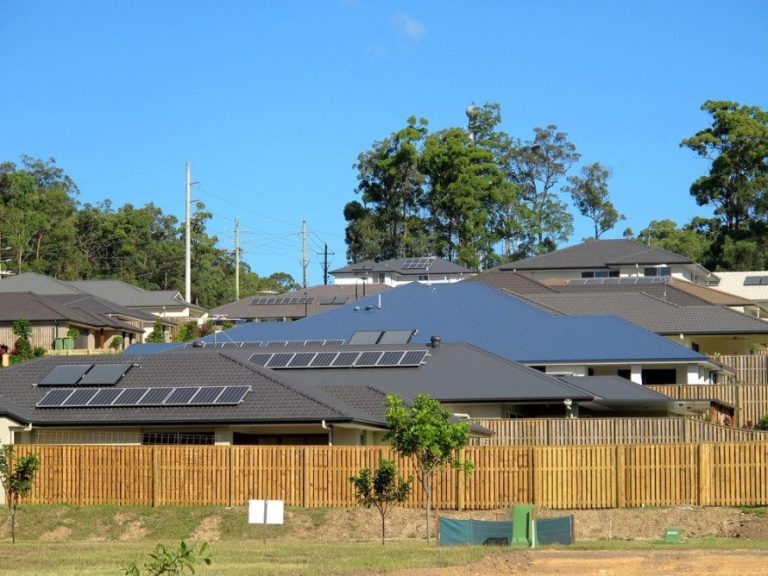Surge in Rooftop Solar PV Installs Expected Amid Battery Rebate and Cyclone Damage
Rooftop solar photovoltaic (PV) installations in Australia are expected to experience a significant increase, despite a recent decline attributed to the surge in household battery installations. The Clean Energy Regulator (CER) has highlighted a backlog of upgrades, replacements, and new systems as contributing factors to this anticipated growth.
According to the CER’s latest quarterly report, rooftop solar PV installations during the first half of the year dropped to 1.3 gigawatts, marking a 12 per cent decrease compared to the same timeframe last year. This decline has been linked to the success of the federal battery rebate programme, known as the Cheaper Batteries Program, which has led many consumers to delay their PV system installations while awaiting battery setups. Additionally, the high volume of battery installations has monopolised the time of installers.
Impact of Battery Installations on PV Systems
The CER noted that installers are currently prioritising battery installations for their existing PV system clients rather than seeking new customers for PV systems. It also mentioned that some systems were installed to the point of being ‘Ready to Commission’ in the second quarter but were not completed until the third quarter.
As the backlog of ‘Ready to Commission’ installations from Q2 is addressed and installers shift their focus back to new PV system installations, as well as upgrades and replacements of older systems, the capacity and installation figures for PV systems are expected to rebound towards the end of the year.
The CER has maintained its estimate of installed capacity for 2025 at between 2.9 and 3.2 gigawatts, although it acknowledged that uncertainty regarding this range has increased as the effects of new policies unfold.
Record Replacement Rates for PV Systems
Interestingly, the CER reported that the proportion of PV systems being installed as replacements for older systems reached a record high of 22 per cent in the June quarter. In Queensland, approximately one-third of all installations in Q2 2025 were replacement systems. This increase may be partially influenced by Cyclone Alfred, with high replacement rates observed in cyclone-affected areas such as Moreton Bay and Redland.
The CER anticipates that replacement rates will continue to rise in the coming years, particularly in Queensland, where historically high state-based solar feed-in tariffs are nearing their conclusion.
Insights on Solar Battery Rebate
Analysis of the initial two months of the solar battery rebate programme reveals that 50 per cent of the validated batteries were sized between 10 and 20 kWh, with an average capacity of 15 kWh. It is estimated that around 45 per cent of battery installations are ‘concurrent’, meaning they are installed alongside a new, expanded, or replacement solar PV system.
The remaining 55 per cent of battery installations are believed to be ‘retrofitted’ to existing solar PV systems, most of which were installed over a year ago. The CER noted that households and businesses with larger solar PV systems tend to opt for bigger batteries.
On average, the installed battery capacity corresponds to the maximum energy that the solar PV system can generate over a two-hour period. By mid-September, the CER had received approximately 55,000 applications, representing over one gigawatt-hour of capacity, with more than 700 megawatt-hours validated—surpassing the storage capacity of Australia’s largest operational battery, the Waratah Super Battery in New South Wales.
Looking ahead, the CER expects to see an increase in PV capacity as households aim to maximise the use of their newly installed batteries. There is anticipated to be strong demand for new solar PV systems to replace older, smaller systems that have reached the end of their contracted feed-in tariffs.






